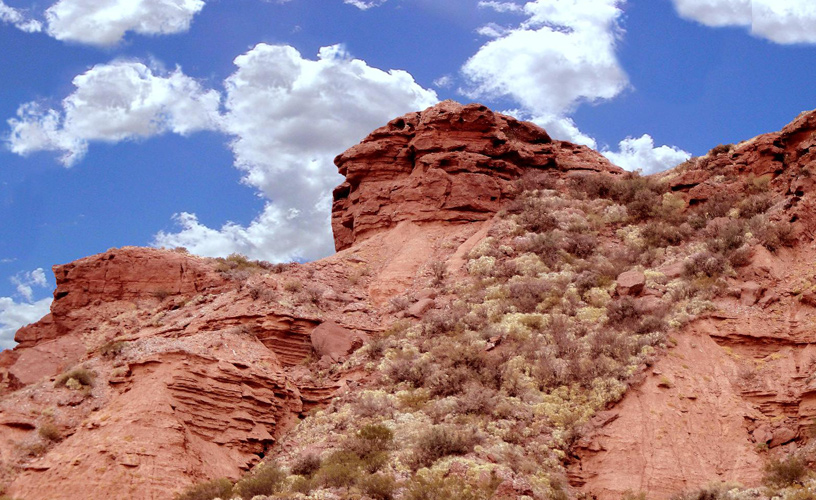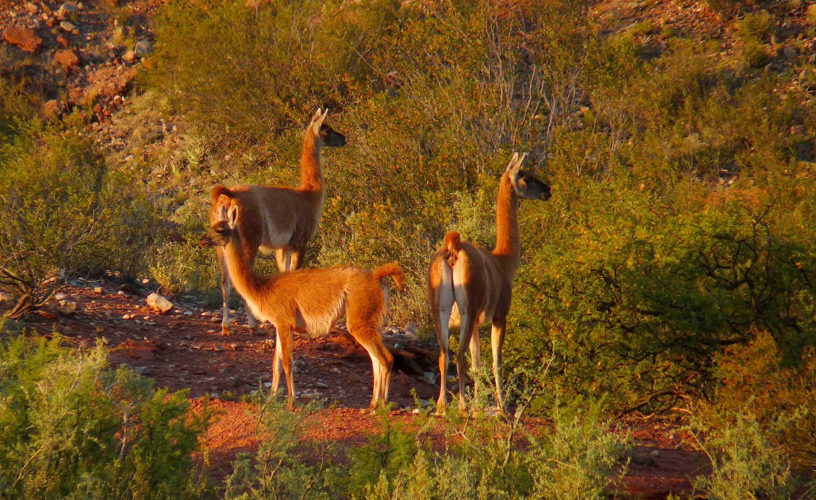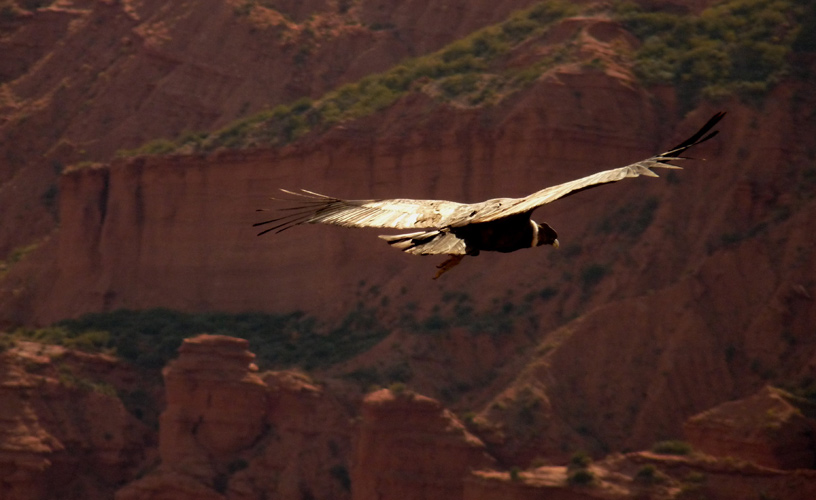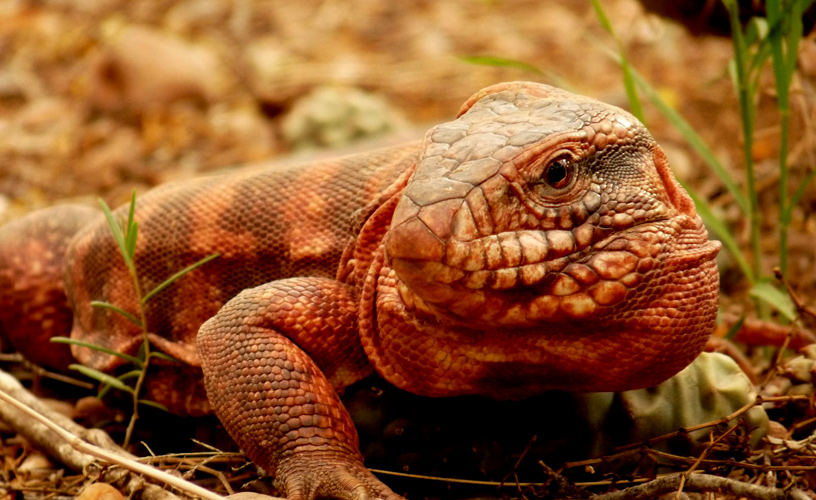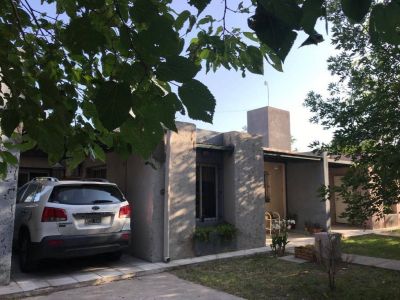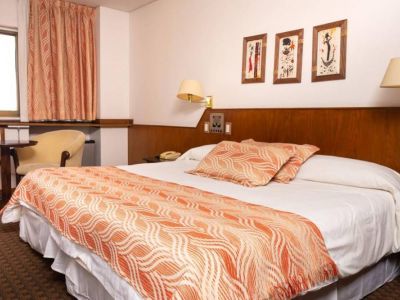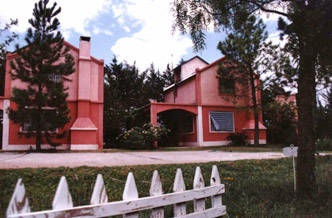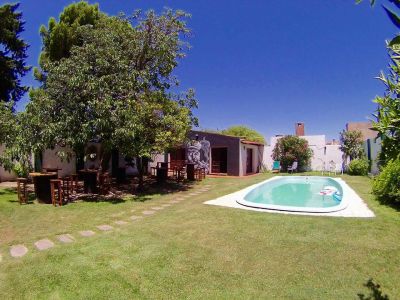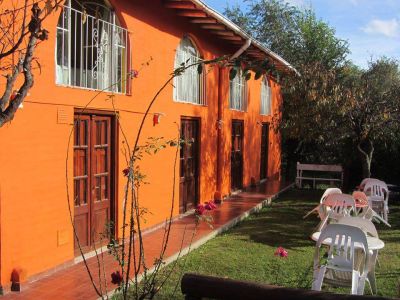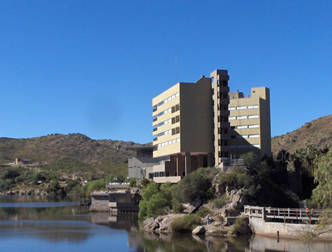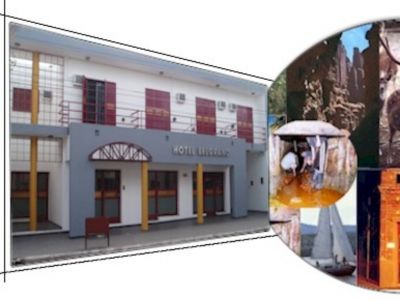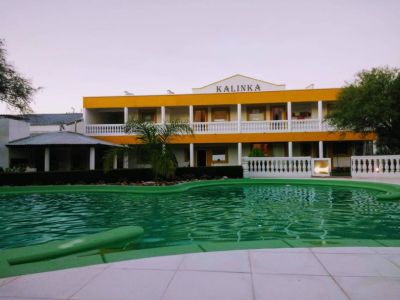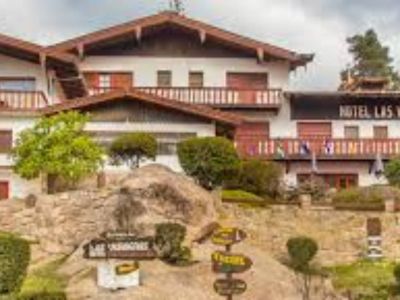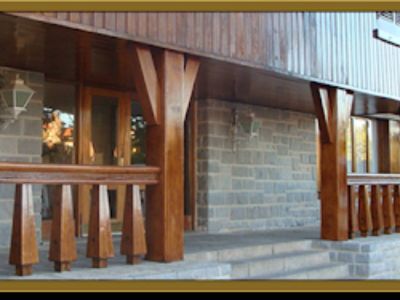This park was created in 1991 to protect the biomas of the monte and the west Chaco and preserve archaeology and paleontology deposits.
This natural treasure originally inhabited by the Huarpes can be visited during all year, although the extreme summer temperatures make the outing more difficult and tiring.
You must bear in mind that neither in the park nor on the access route there are services, so it ts advisable to carry supplies and drinking water.
Circuits
Sierra de Las Quijadas National Park
If you are planning a short visit, you can take a deviation and drive a few kilometers to the viewpoints. A red background formed by cliffs and altars of different heights is Potrero de la Aguada. Sitting on a rock or at the edge of a cliff one may stay for hours watching the panorama, in a state of total peace. The sensation is unique. You will be marvelled at the warm tones of this scenery. Not in vane movie producer Adolfo Aristarain chose this place to film "Un Lugar en el Mundo" (A Place in the World) with the actor Federico Luppi.
But if you wish to spend a long journey you may descend to the valley. In that case there are certain recommendations to take into account. You must tell the park ranger and hire the service of a local guide, since one may easily get lost in these natural labyrinths. It is important to avoid damaging the environment, causing erosion, or damage shrubs or fossils such as those of flying reptiles. While descending we will cross Potrero de la Aguada and see Desaguadero river on the west, which feeds some temporary ponds during rainy seasons, forming Guanacache lagoons.
The name "Quijadas" refers to the maxillary bone. If you look at the map of these sierras, you will see that their shape looks like an animal maxillary bone. But when they were baptized, images taken from the air did not exist. By the end of the XIX century carts travelling from Buenos Aires to San Juan were taken by assault by bandits who hid in the labyrinths of the sierras.
The main food of these cattle thieves was meat, and the legend says that the first part they ate was the jawbone. Signs offering a reward for the capture of these bandits read "Gauchos de las Quijadas" (Jawbones Gauchos).
Karina Jozami
Parques Nacionales - Prensa
